#Longshanks
Text

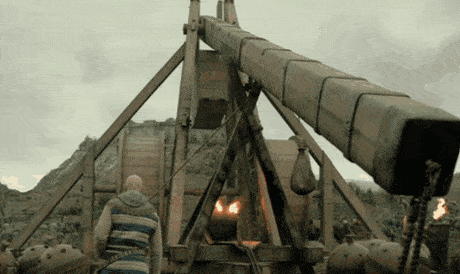
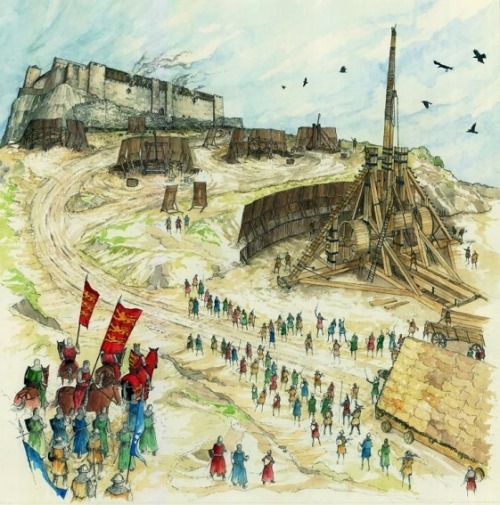

July 20th 1304 saw the Fall of Stirling Castle.
Edward I of England laid siege to the Castle as part of the the Scottish Wars of Independence.
Stirling was, and indeed still is a formidable castle and the Scots were holding out so Longshanks ordered the building of the trebuchet or as it became known “The Warwolf” the work on it commenced within sight of the castle walls. According to medieval sources five master carpenters and 49 other labourers were given the task of constructing this siege weapon, the biggest of its kind ever to be built. It took three months to finish it and according to modern estimates, the trebuchet would have risen to a height of 300 to 400 feet. It could effectively raid stones at a wall 200 yards away, hurled at a speed of 120 miles per hour.
Witnessing the construction of such a mammoth trebuchet, it is claimed the Scots tried to surrender to Edward but Edward sent back a part of the Scottish garrison into the castle so that he could still test his trebuchet’s prowess.
When used against the Stirling castle, the trebuchet destroyed the gatehouse and was as formidable in its use as its size. Given its size, it could toss stones of up to 300 pounds in weight which, when thrown against the Stirling Castle, effectively demolished the parts of the curtain wall where they hit.
Other mentions of the trebuchet is that Edward ordered the payment of 10 shillings to the workers and the overall construction of the trebuchet itself cost upwards of 40 pounds, and of another worker being paid for guarding the material used to construct the trebuchet. Apart from these, no detailed mentions of the weapon exist nor are any remains of it today, not surprising as it would mainly have been made of wood and to e moved elsewhere it filled up to 30 wagons.
Stirling would remain under the occupancy of the English until 1314 whem it was surrendered after Bannockburn.
#scotland#scottish#history#stirling castle#edward i#longshanks#england#the first war of scottish independence
18 notes
·
View notes
Text

Dewshine and Longshanks
—-
I could probably continue this forever but… god, I am so done with this. Emotionally. Digital project I started on last year that I happened to find on my ipad files a few weeks ago.
I remember when I started this, I kept thinking about how Dewshine is rarely drawn on her own without her lovemates or her tormentor, and so many forget that her primary weapon is bow and arrow. I also thing I have never seen her drawn with her wolffriend? So here she is hunting with Longshanks.
8 notes
·
View notes
Text
Edward I of England
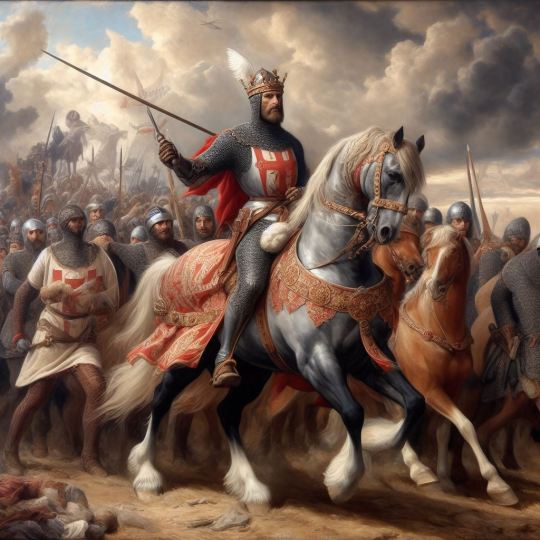



0 notes
Text
Irish Coin Daily: Silver Farthing of Edward I, 2nd Coinage (Dublin Mint)
Date: c.1280-84
Description:
Edward I (1272-1307), Second Issue, Silver Farthing (Dublin Mint); struck c.1280-1284
Diameter: 11mm
Weight: 0.37 g.
Good Fine (gF)
References:
Withers VI 1a
SCBI 22 (Copenhagen), –SCBC 625596267
Obverse:
Crowned facing bust within triangle
Legend: ” ЄRΛ NG LIЄ “
Reverse:
Long cross pattée, triple pellets in angles
Dublin Mint signature ” CIVI TΛS DVBL INIЄ…

View On WordPress
#Anglo-Norman#dublin#Dublin mint#edward i#farthing#Ireland#irish#longshanks#medieval#penny#round farthing#silver#silver farthing
0 notes
Link
So, the Tower of London? A nearly 1000 year old landmark and now, a part of the monarchy's real estate holdings but what do you know about it? Today, we talk about the castle's origins, it's creation as a symbol of Norman might by William the Conqueror since then it has gone on to become a Royal Mint, a garrison, a palace, an armory, a raven's nest, a prison and a site of many murders and bloody executions. Join us as we learn about the tower and Krysta adds Henry VIII to her collection of people she despises. Find out who Margaret Pole was and why we love her so much. All this and more in this episode full of history, hauntings, and some true crime (or things that should have been crimes even if they weren't at the time) in this weird and wonderful episode of the Family Plot Podcast
#anne#boleyn#conqueror#countess#edward#fawkes#guy#henry#i#longshanks#margaret#pole#ravenmaster#tower#viii#wallace#warders#white#william#yeoman
0 notes
Text
King Edward I badge

King Edward I of England
by CreativeHistory
#King Edward#Edward I#Plantagenet#King of England#English king#Barons war#crusades#crusader king#English history#Scottish history#Longshanks#Welsh history#badge#Zazzle#medieval king
1 note
·
View note
Photo

Double booking . . . . . #books #bookstagram #bookstagrammer #reading #arthurianmyths #edwardi #longshanks https://www.instagram.com/p/Cm4Df2Tty4j/?igshid=NGJjMDIxMWI=
0 notes
Text
Inside William’s Next Act: Tatler’s May issue goes behind the scenes as the Prince of Wales is rising above the noise — and playing the long game
The burden of leadership is falling upon Prince William, but as former BBC Royal Correspondent, Wesley Kerr OBE, explains in Tatler’s May cover story, the future king is taking charge
By Wesley Kerr OBE
21 March 2024
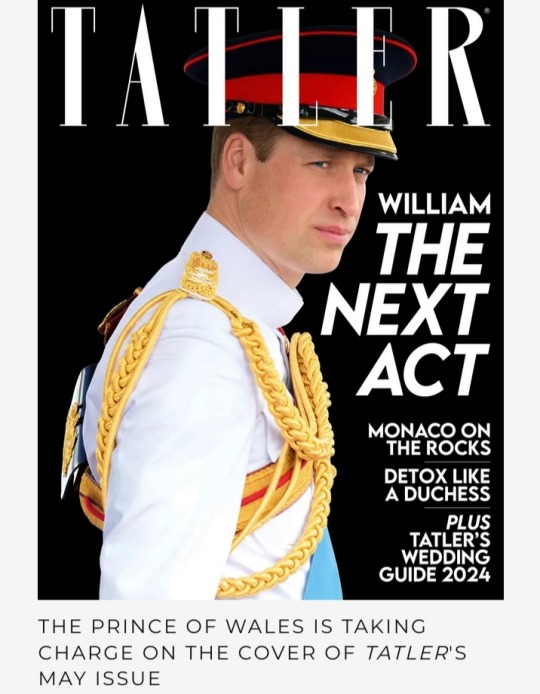
When I first met Prince William in 2009, he asked me if I could tell him how he could win the National Lottery.
It was a jokey quip from someone who has since become the Prince of Wales, the holder of three dukedoms, three earldoms, two baronies and two knighthoods, and heir to the most prestigious throne on earth.
He was, of course, being relatable; I was representing the organisation that had allocated Lottery funding towards the Whitechapel Gallery and he wanted to put me at ease.
William is grand but different, royal but real.
At 6ft 3in, he has the bearing and looks great in uniform after a distinguished, gallant military career.
He will be one of the tallest of Britain’s kings since Edward Longshanks in the 14th century and should one day be crowned sitting above the Stone of Scone that Edward ‘borrowed.’
William, by contrast, has a deep affinity with Scotland and Wales, having lived in both nations and gained solace from the Scottish landscape after his mother died.
He’s popular in America and understands that the Crown’s relationship to the Commonwealth must evolve.
The Prince of Wales has long believed that ‘the Royal Family has to modernise and develop as it goes along, and it has to stay relevant’, as he once said in an interview.
He seeks his own way of being relatable, of benefitting everybody, in the context of an ancient institution undergoing significant challenge and upheaval, as the head of a nation divided by hard times, conflicts abroad, and social and political uncertainty.
We might recognise Shakespeare’s powerful line spoken by Claudius in Hamlet: ‘When sorrows come, they come not single spies, but in battalions.’
With the triple announcement in January and February of the Princess of Wales’s abdominal surgery and long convalescence, of King Charles’s prostate procedure and then of his cancer diagnosis, the burden of leadership has fallen on 76-year-old Queen Camilla and, crucially, on William.

The Prince of Wales’s time has come to step up; and so he has deftly done.
In recent months, we have seen a fully-fledged deputy head of state putting into practice his long-held ideas, speaking out on the most contentious issue of the day and taking direct action on homelessness.
Last June, he unveiled the multi-agency Homewards initiative with the huge aspiration of ending homelessness, backed with £3 million from his Foundation to spearhead action across the UK.
He is consolidating Heads Together, the long-standing campaign on mental health, and fundraises for charities like London’s Air Ambulance Charity.
He was, of course, once a pilot for the East Anglian Air Ambulance services – a profession that had its downside: seeing people in extremis or at death’s door, he found himself ‘taking home people’s trauma, people’s sadness.’
Tom Cruise was a guest at the recent London’s Air Ambulance Charity fundraiser, William’s first gala event after Kate’s operation.
And more stardust followed when William showed that, even without his wife by his side, he could outclass any movie star at the Baftas.
There’s also his immense aim of helping to ‘repair the planet’ itself with his Earthshot Prize: five annual awards of £1 million for transformative environmental projects with worldwide application.
This project has a laser focus on biodiversity, better air quality, cleaner seas, reducing waste and combating climate change. Similar aims to his father; different means to achieve the goal.
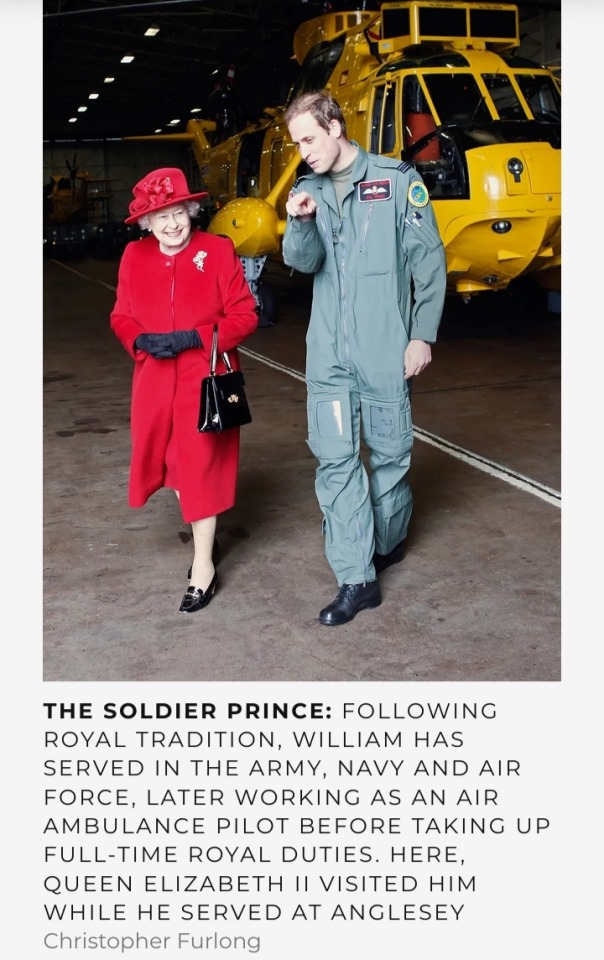
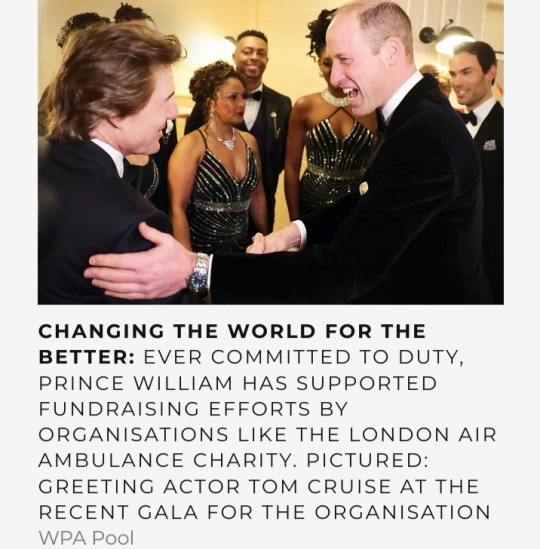
On the issue which has caused huge convulsions – the Middle East conflict – William’s 20 February statement from Kensington Palace grabbed attention.
He said he was ‘deeply concerned about the terrible human cost of the conflict since the Hamas terrorist attack on 7 October. Too many have been killed.’
There were criticisms – along the lines of ‘the late Queen would have never spoken out like this’ or ‘what right does he have to meddle in politics?’ – but it was hard to disagree with his carefully calibrated words.
His call for peace, the ‘desperate need’ for humanitarian aid, the return of the hostages.
The statement was approved by His Majesty’s Government, likely cleared with the King himself at Sandringham the previous weekend and also backed by the chief rabbi of Great Britain, Sir Ephraim Mirvis.
Indeed, William and Catherine had immediately spoken out on the horrors of 7 October.
William followed up the week after his Kensington Palace statement by visiting a synagogue and sending a ‘powerful message’, according to the chief rabbi, by meeting a Holocaust survivor and condemning anti-Semitism.
This is rooted in deep personal conviction following William’s 2018 visit to Israel and the West Bank, says Valentine Low, the distinguished author of Courtiers and The Times’s royal correspondent of 15 years, who was on that 2018 trip.
‘William was so moved by his visit to Israel and the West Bank, he found it very affecting, and he was not going to drop this issue – he was going to pay attention to it for the rest of his life,’ says Low.
‘He must feel that… not to say something on the most important issue in the world [at that moment] would be a bit odd if you feel so strongly about it.’
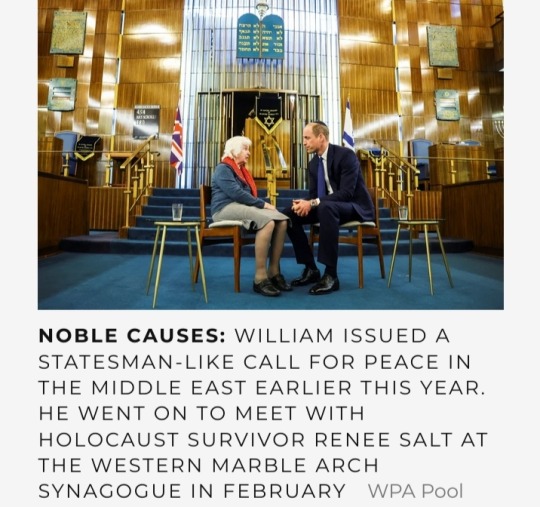
There was concern from some commentators about politicising the monarchy, but this rose above the particulars of party politics.
As Prince of Wales, like his father before him, there is perhaps space to speak out sparingly on carefully chosen issues.
On this occasion, his views were in line with majority public opinion.
On homelessness, news came that same week that William was planning to build 24 homes for the homeless on his Duchy of Cornwall estate.
‘William’s impact is very personal,’ says Mick Clarke, chief executive of The Passage, a charity providing emergency accommodation for London’s homeless.
‘Two weeks before Christmas, the prince came to our Resource Centre in Victoria for a Christmas lunch for 150 people.
He was scheduled to stay for an hour, to help serve, wash up, and talk to people.
He ended up staying for two and a quarter hours, during which time he went from table to table and spoke to every single person.’
Clarke continues:
‘William has an ability to listen, talk and to put people at ease. During the November 2020 lockdown, he came on three separate occasions to help.
It gave the team a boost that he took the time; it was his way of saying: “I support you; you’re doing a great job.”’
Seyi Obakin, chief executive of Centrepoint, one of the prince’s best-known causes, adds:
‘People associate his patronage with the big moments like the time he and I slept under Blackfriars Bridge.
The things that stick with me are smaller in scale and the more profound for it – in quieter moments, away from the cameras, where he has volunteered his time.’
It is a different approach from the King’s.
As Prince of Wales, he was involved in the minutiae of dozens of issues at any one time, working into the night to follow up on emails, crafting his speeches, writing or dictating notes.
Add to that much nationwide touring over 40 years (after he left active military service in 1976), fitting in multiple engagements, often being greeted formally by lord lieutenants.
This is not William’s style. He has commended his father’s model, but he does things his own way.
Although patronages are under review, William has up till now far fewer than either his father or his grandparents.
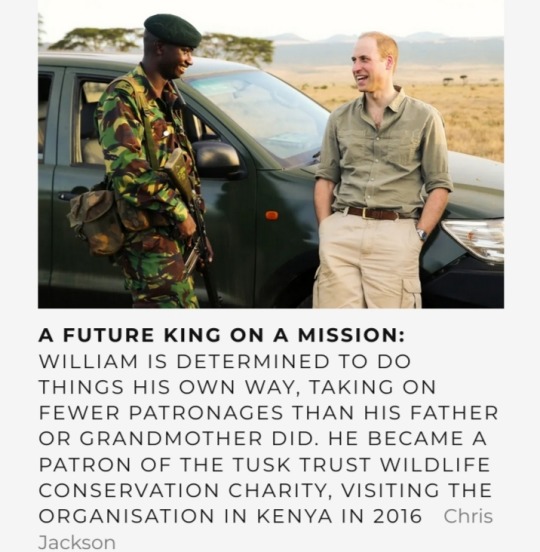
Charles is sympathetic to William’s approach and his desire to make time with his young family sacrosanct.
They are confidantes, attested by the night of Queen Elizabeth’s death.
They were both at Birkhall with Camilla, reviewing funeral arrangements while the rest of the grieving family were nearby at Balmoral, hosted by the Princess Royal.
Charles has had almost six decades in public life and is the senior statesman of our time, with even longer in the spotlight than Joe Biden.
After Eton and St Andrew’s University, where he met Catherine, William served in three branches of the military between 2006 and 2013, finishing as a seasoned and skilled helicopter rescue pilot.
His later employment as an air ambulance pilot stopped in 2017, when he became a full-time working royal.
At that time, not so long ago – with Harry unmarried, Andrew undisgraced, and Philip and Elizabeth still active – William shared the spotlight.
Now, after the King, he’s the key man.
He can look back on the success of his first big campaign initially launched with his wife and brother in 2016: Heads Together.
‘We are delighted that Prince William should have become such a positive and sympathetic advocate for mental health through his Heads Together initiative and now well-established text service, Shout, among other projects,’ says the longtime CEO and founder of Sane, the remarkable Marjorie Wallace CBE.
‘It is not always known that he follows in the footsteps of his father, the King, whose inspiration and vision were vital in the creation of our mental health charity Sane.
As founding patron, he was instrumental in establishing our 365-days-a-year helpline and was a remarkable and selfless support to me in setting up the Prince of Wales International Centre for Sane Research.’
'Indeed,' says Wallace, 'this is where Prince William echoes the work of his father, showing the same ‘understanding and compassion for people struggling through dark and difficult times of their lives and has done much to raise awareness and encourage those affected to speak out and seek help.
We owe a huge debt to His Majesty and the Prince of Wales for their involvement in this still-neglected area.’
Just as I saw all those years ago at that early solo engagement in Whitechapel, William still approaches his public duties with humour and fun.
‘He defuses the formality with jocularity,’ says Valentine Low, citing two public events in 2023 that he witnessed.
In April last year, while on a visit to Birmingham, William randomly answered the phone in an Indian restaurant he was being shown around and took a table booking from a customer – an endearing act of spontaneity.
On his arrival later that day, the unsuspecting diner was surprised to be told exactly whom he had been talking to.

In October, Low reported, William ‘unleashed his inner flirt as he hugged his way through a visit with Caribbean elders [in Cardiff] to mark Black History Month.
As he gave one woman a hug – for longer than she expected – he joked: “I draw the line at kissing.”
And while posing for a group photograph, he prompted gales of laughter when he quipped: “Who is pinching my bottom?”’
Low believes that when William eventually becomes king, he will be more ‘radical’ than his father but wonders if people will respond to ‘call me William’ when ‘the whole point of the Royal Family is mystique and being different.’
However, William has thought deeply about his current role and is prepared for whatever his future holds.
For now, there is a decision to be made on Prince George’s secondary schooling. It’s said that five public schools are being considered, all fee-paying.
Eton is single-sex and boarding but close to home. Marlborough (Catherine’s alma mater) is co-ed and full boarding. And Oundle, St Edward’s Oxford and Bradfield College (close to Kate’s parents) are co-ed with a mix of boarding and day.
As parents, William and Catherine aspire to raise their children ‘as good people with the idea of service and duty to others as very important’, William said in an interview with the BBC in 2016.
‘Within our family unit, we are a normal family.’ Which may be one reason why he is so resistant to their privacy being compromised either by the media or close family members.
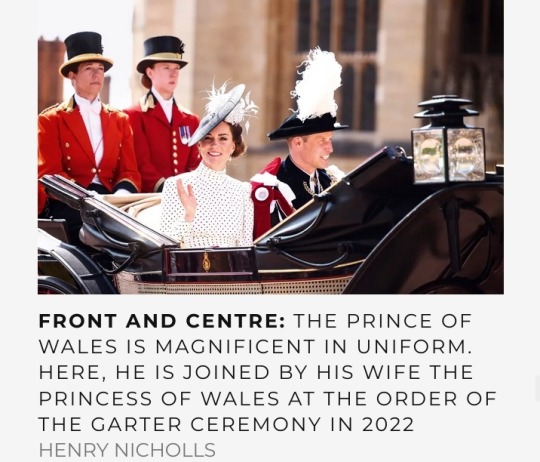
The 19th-century author Walter Bagehot wrote:
‘A family on the throne is an interesting idea also. It brings down the pride of sovereignty to the level of petty life… a princely marriage is the brilliant edition of a universal fact, and, as such, it rivets mankind.’
If hereditary monarchy is to survive, it must beguile us but also demonstrate its utility, that it is a force for good.
William said in that 2016 interview, ‘I’m going to get plenty of criticism over my lifetime,’ echoing Queen Elizabeth II’s famous Guildhall speech in 1992 ‘that criticism is good for people and institutions that are part of public life. No institution – city, monarchy, whatever – should expect to be free from the scrutiny of those who give it their loyalty and support, not to mention those who don’t.’
William saw close up his mother’s ability to bring public focus and her own personal magnetism to any subject or cause she focused on.
He admires his father’s work ethic, the way he ‘really digs down,’ sometimes literally (I understand that gardening is giving the King solace during his cancer treatment).
But the biggest influence for William was Her late Majesty, as he said on her 90th birthday.
As an Eton schoolboy, William made weekend visits to the big house on the hill, being mentored by Granny rather as she had been tutored in the Second World War by the then vice-provost of Eton, Sir Henry Marten.
William said in 2016:
‘In the Queen, I have an extraordinary example of somebody who’s done an enormous amount of good and she’s probably the best role model I could have.’
That said, his aim was ‘finding your own path but with very good examples and guidance around you to support you.'

Queen Elizabeth II had a brilliant way of rising above the fray and usually being either a step ahead of public opinion or in tune with it.
If you are at the helm of affairs in a privileged hereditary position, your duty is to serve and use your pulpit for the benefit of others.
In a democracy, monarchy is accountable.
The scrutiny is intense, with an army of commentators paid for wisdom and hot air about each no-show, parsing each announcement, interpreting each image.
William takes the long view. He has ‘wide horizons,’ says Mick Clarke.
‘There are so many causes that are more palatable and easier to achieve than ending homelessness, but his commitment and drive are 100 per cent.’
The prince seeks a different way of being royal in an ancient institution that must move with the times. His task? To develop something modern in an ever-changing world.
He faces all sorts of new issues – or old issues in new guises.
Noises off from within the family don’t help – Andrew’s difficulties, or the suggestions of prejudice from Montecito a couple of years ago (now seemingly withdrawn), which prompted William’s most vehement soundbite: ‘We’re very much not a racist family.’
William is maybe a new kind of leader who can keep the monarchy relevant and resonant in the coming decades.
Queen Elizabeth II is a powerful exemplar and memory, but she was of her time. William is his own man.
He must overcome and think beyond ‘the unforgiving minute.’
Indeed, he could seek inspiration in Rudyard Kipling’s poem, If.
If you can force your heart and nerve and sinew
To serve your turn long after they are gone,
And so hold on when there is nothing in you
Except the Will which says to them: ‘Hold on!’
If you can talk with crowds and keep your virtue,
Or walk with Kings—nor lose the common touch[…]
Yours is the Earth and everything that’s in it,
And—which is more—you’ll be a Man, my son!
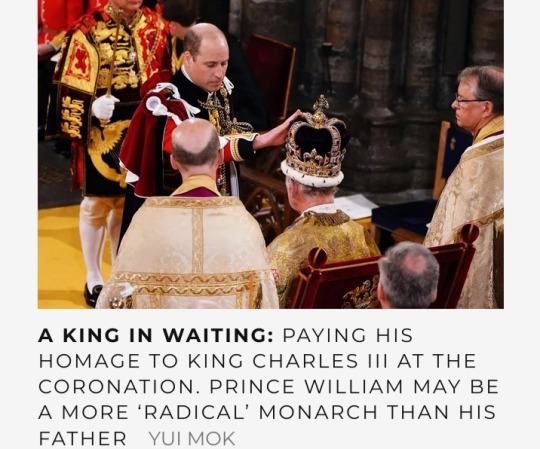
This article was first published in the May 2024 issue, on sale Thursday, 28 March.
#Prince William#Prince of Wales#British Royal Family#Wesley Kerr OBE#Edward Longshanks#Homewards#Heads Together#London’s Air Ambulance Charity#East Anglian Air Ambulance#Tom Cruise#BAFTAS#Earthshot Prize#Kensington Palace#King Charles III#Sir Ephraim Mirvis#Valentine Low#Duchy of Cornwall estate#The Passage#Centrepoint#Birkhall#Sane#Marjorie Wallace CBE#Shout#Balmoral#Prince George#Walter Bagehot#Sir Henry Marten#Rudyard Kipling#If
146 notes
·
View notes
Text
The fact that Brom randomly represented himself at Jeod's house after missing for about sixteen years and Jeod was just "nah that shit's crazy! Come in! Oh, and you even have a son? Crazy, crazy..." says a lot about him and their friendship
#he's so chaotic and that poor guy had to support him in everything#jeod needs more credit#eragon#eragon shadeslayer#brom#jeod longshanks#the varden#the inheritance cycle#inheritance cycle
108 notes
·
View notes
Text
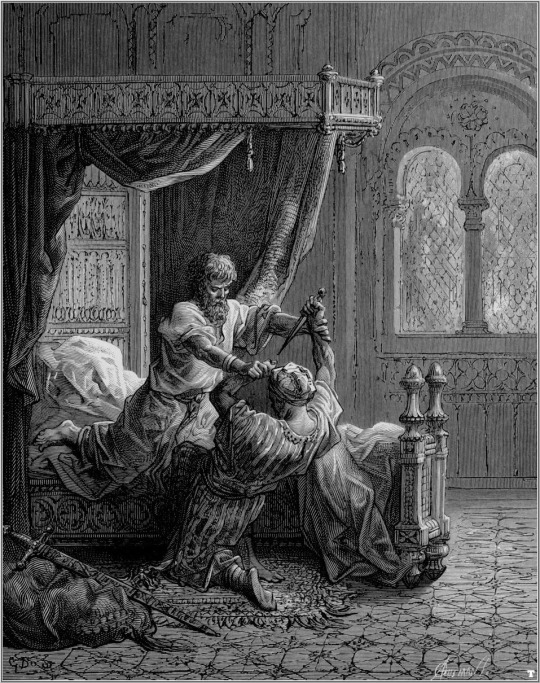
Edward I kills his attempted assassin by Gustave Doré
Edward I was nearly killed by an Assassin during Lord Edward's Crusade, most likely sent by the Mamluk Sultan Baibars, in order to remove his opposition to a 10-year truce with the Christian states at Jerusalem. He narrowly survived poisoning from the blade of the Assassin.
#gustave doré#edward longshanks#edward i#king#england#crusade#assassin#art#crusades#assassins#history#order of assassins#medieval#middles ages#bibliothèque des croisades
129 notes
·
View notes
Text

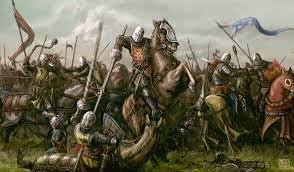
April 27th 1296 saw Scots defeated by Edward I at the Battle of Dunbar.
After the sack of Berwick-upon-Tweed, Edward remained in the town for a month, supervising the strengthening of its defences. On 5th April, he received a message from King John renouncing his homage, to which he remarked, more in contempt than anger, “O’ foolish knave! What folly he commits. If he will not come to us we will go to him.”
The next objective in the campaign was the Earl of March’s castle at Dunbar, a few miles up the coast from Berwick. March was with the English, but his wife, Marjory Comyn, sister of the Earl of Buchan, did not share her husband’s political loyalties and allowed her fellow Scots to occupy the castle. Edward sent one of his chief lieutenants, John de Warenne, 6th Earl of Surrey, John Balliol’s own father-in-law, northwards with a strong force of knights to invest the stronghold. The defenders sent messages to King John, to the main body of his army at nearby Haddington, asking for urgent assistance. In response the army, or a large part of it, advanced to the rescue of Dunbar. John, who was showing even less skill as a commander than he had as a king, did not accompany it. The campaign of 1296 was now to enter its final phase.
According to the history books The Battle of Dunbar was an action between two bodies of mounted men-at-arms, the two forces came in sight of each other on 27 April. The Scots occupied a strong position on some high ground to the west. To meet them, Surrey’s cavalry had to cross a gully intersected by the Spot Burn. As they did so their ranks broke up, and the Scots, deluded into thinking the English were leaving the field, abandoned their position in a disorderly downhill charge, only to find that Surrey’s forces had reformed and were advancing in perfect order.
The English routed the disorganised Scots in a single charge. The action was brief and probably not very bloody, since the only casualty of any note was a minor Lothian knight, Sir Patrick Graham, though about 100 Scottish lords, knights and men-at-arms were taken prisoner.
According to one English source over ten thousand Scots died at the battle of Dunbar, however this is probably a confusion with the casualties incurred at the storming of Berwick. The survivors fled westwards to the safety of Selkirk Forest. The following day King Edward appeared in person and Dunbar castle surrendered. Some important prisoners were taken: John “the red” Comyn, Earl of Buchan, and the earls of Atholl, Ross and Menteith, together with 130 knights and esquires. All were sent into captivity in England.
The battle of Dunbar effectively ended the war of 1296 with the English winning. The remainder of the campaign was little more than a grand mopping-up operation. James, the hereditary High Steward of Scotland, surrendered the important fortress at Roxburgh without attempting a defence, and others were quick to follow his example. Only Edinburgh Castle held out for a week against Edward’s siege engines. A Scottish garrison sent out to help King John, who had fled north to Forfar, were told to provide for their own safety.
Edward himself, advanced into central and northern Scotland in pursuit of King John. Stirling Castle, which guarded the vital passage across the River Forth was deserted , well almost, according to the history of some chroniclers there was a janitor who stayed behind to hand the keys to the English. John reached Perth on 21st June, where he received messages from Edward asking for peace.
John Balliol, in surrendering, submitted himself to a humiliation at the hands of The English King. At Kincardine Castle on 2nd July he confessed to rebellion and prayed for forgiveness. Five days later in the kirkyard of Stracathro he abandoned the treaty with the French. The final humiliation came at Montrose on 8th July. Dressed for the occasion John was ceremoniously stripped of the vestments of royalty. Antony Bek, the Bishop of Durham, ripped the red and gold arms of Scotland from his surcoat, thus bequeathing to history the nickname Toom Tabard (empty coat) by which John has been known to generations of Scottish schoolchildren. He and his son Edward were sent south into captivity. Soon after, the English king followed, carrying in his train the Stone of Scone and other relics of Scottish nationhood.
Scotland was more or less in the hands of Longshanks army, and by all accounts, with the exception of Berwick, with little bloodshed, soon after The Comyns, The Bruces and other Scottish nobles would be free again and given lands and their titles back, after swearing allegiance to King Edward, but murmurs of discontent were beginning and the emergence of a rebellion were starting, with the often overlooked Andrew de Moray in the north, and on William Wallace in the south.
#scotland#scottish#the first war of scottish independence#john balliol#english#longshanks#edward i#medieval history#medieval warfare#history
20 notes
·
View notes
Note
📏 Angel (5'9) and his longshanks werewolf son Silas
Comparing muses heights / the website im actually using

angel . baby . I’m so sorry but you’re longshanks son is towering over you </3
#vullcanica#( * / answered ; personal. )#LONGSHANKS SON !!#this is also just his height as a human too ??#if we’re talking about wolf boy then full werewolf … it’s worse …#lil goblin werewolf towering over his new dad </3 rip
5 notes
·
View notes
Photo
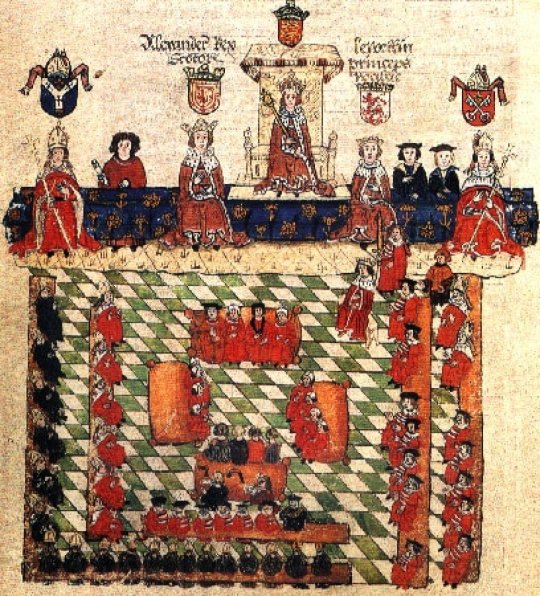
The open of the Parliament in the reign of King Henry III of England.
Be noticed, according to author Darren Baker, that in 1254, “Henry names his wife Eleanor of Provence regent before he goes abroad. She becomes the first woman to attend parliament and orders the sheriffs to elect local knights, the first time commoners and the monarchy converge under a democratic mandate.”
#henry iii of england#Henry of Winchester#king henry of england#king henry iii#king henry iii of england#henry iiii#eleanor of provence#aliénor de provence#plantagenet dynasty#edward i#edward longshanks#english parliament#magna carta#second baron's war#house of plantagenet#plantagenet#plantagenets#henry plantagenet#middle ages#primary resources#medieval england
15 notes
·
View notes
Text
Aberystwyth Castle. Zorki 4. Expired Perutz Primera 100.
One advantage of visiting places alone and without a plan is that one happens upon things that they would not ordinarily expect. When i visited Aberystwyth I just followed a random sign to a car park and went walking without a purpose. At some point I turned a corner and happened upon Aberystwyth Castle.
The castle dates back to the reign of Edward I (also known as Edward Longshanks or The Hammer Of The Scots) and was slighted by Oliver Cromwell in 1649. Had I known I would happen across a ruined castle I may well have ensured I was loaded with black and white film. Perhaps that is an excuse for a future visit.

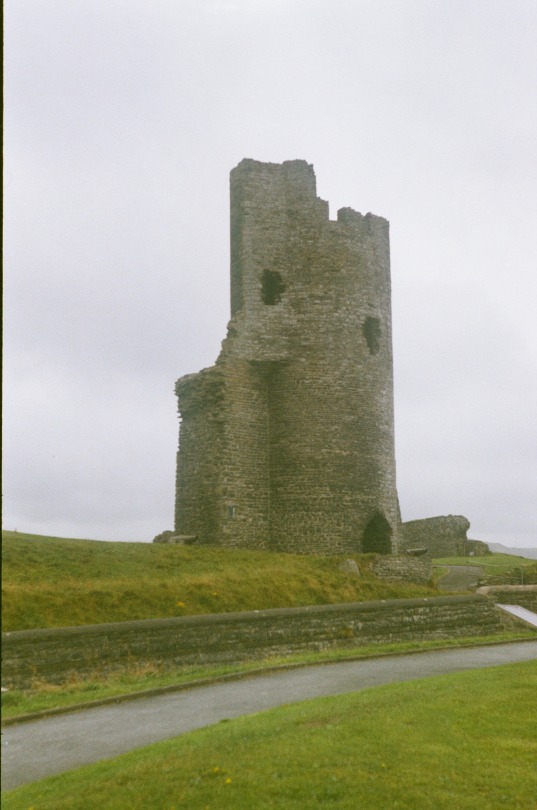

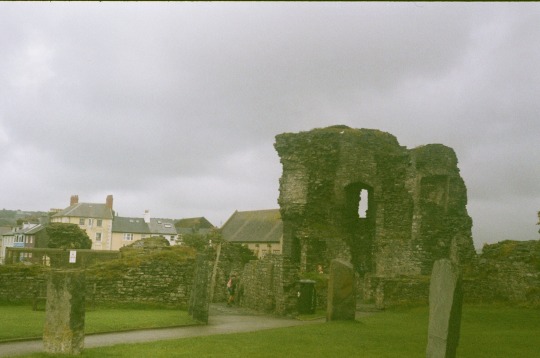


#liverpool#liverpoollomo#lomo#lomography#analogue photography#zorki 4#russian camera#rangefinder#expired film#colour film#35mm film#Aberystwyth Castle#Aberystwyth#ceredigion#west wales#edward longshanks#cardigan bay#film is not dead#don't think just shoot#perutz primera 100
1 note
·
View note
Text
I haven't played AOE 2 since my PS2 days (long time ago) & it's really good to see this game again. I have fond memories of deforesting the entire map during the Joan of Arc campaign.
Obviously the graphics are better & more detailed & the controls are easy as I remember too. I'm really looking forward to playing the many campaigns. My one complaint about this & it's the same one I had all those years ago: the William Wallace campaign is only a learning level & extremely well short.
1 note
·
View note
Text
On this day in 1547, King Henry VIII of England died.

Good riddance, you evil fat wank.
#henry viii of england#worst monarch in the entire history of the british isles#and that's against some pretty stiff competition#worse than john#worst than ethelred the unready#worse than mary queen of scots#worse than mary tudor#worse than edward longshanks#worse than edward viii the traitor#worse than edward ii#worse than charles i#worse than james ii
1 note
·
View note